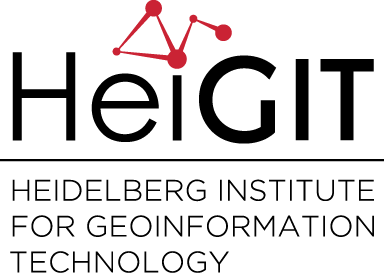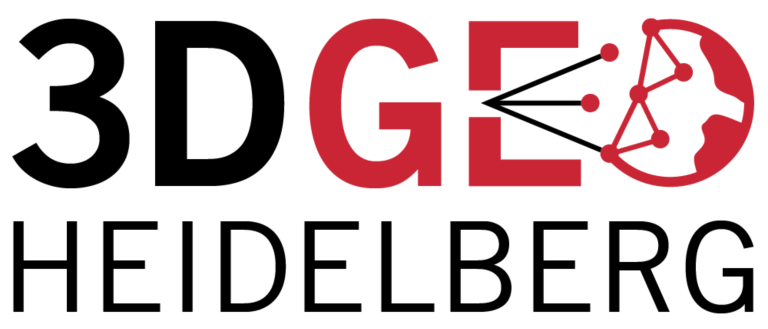Category: Publications
-
Place in GIScience Paper at Platial 2019
The International Symposium on Platial Information Science PLATIAL’19 will be held this year at the University of Warwick in September 5-6. The programme has just been published and includes a paper from our research group about a systematic literature review about Place in the GIScience Community. As the first PLATIAL’2018 symposium held in Heidelberg 2018…
-
Green spaces in cities promote well-being and mental health — ‘Nature’ Neuroscience study published with participation of GIScience researchers at Heidelberg University
INTERDISCIPLINARY NATURE STUDY SHOWS THAT INNER TOWN GREEN DIRECTLY INFLUENCES ON CITY RESIDENTS Inner city green areas such as lawns, flowerbeds, trees or parks can directly improve the well-being of city dwellers. These are the findings of a recent study conducted by scientists from GIScience Research Group at Heidelberg University and the Heidelberg Institute for…
-
Feasibility of Using Grammars to Infer Indoor Room Semantics
Current indoor mapping approaches can detect accurate geometric information but are incapable of detecting the room type or dismiss this issue. A recently published paper investigates the feasibility of inferring the room type by using grammars based on geometric maps. Specifically, we take the research buildings at universities as examples and create a constrained attribute…
-
GRÜNFLÄCHEN IN STÄDTEN FÖRDERN WOHLBEFINDEN; ‘Nature’ Neuroscience Studie mit Beteiligung der Geoinformatik der Universität Heidelberg veröffentlicht:
INTERDISZIPLINÄRE STUDIE ZEIGT, DASS INNERSTÄDTISCHES GRÜN UNMITTELBAR EINFLUSS AUF STADTBEWOHNER HAT Innerstädtische Grünflächen wie Rasen, Blumenbeete, Bäume oder Parks können unmittelbar das Wohlbefinden im Alltag von Stadtbewohnern verbessern. Das zeigt eine aktuelle Studie, die Wissenschaftler des Zentralinstituts für Seelische Gesundheit (ZI) in Mannheim gemeinsam mit Geoinformatikern der Universität Heidelberg und Forschern des Mental mHealth Lab…
-
Mapping Human Settlements with Higher Accuracy and Less Volunteer Efforts by Combining Crowdsourcing and Deep Learning
Our new paper on Machine Learning and Humanitarian Mapping Nowadays, Machine Learning and Deep Learning approaches are steadily gaining popularity within the humanitarian (mapping) community. New tools such as the ML Enabler or the rapId editor might change the way crowdsourced data is produced in the future. Hence, at the Heidelberg Institute for Geoinformation Technology…
-
Multi‐temporal 3D point cloud‐based quantification and analysis of geomorphological activity at an alpine rock glacier using airborne and terrestrial LiDAR
Change analysis of rock glaciers is crucial to analyzing the adaptation of surface and subsurface processes to changing environmental conditions at different timescales because rock glaciers are considered as potentially unstable slopes and solid water reservoirs. To quantify surface change in complex surface topographies with varying surface orientation and roughness, a full three‐dimensional (3D) change…
-
Estimating OpenStreetMap Missing Built-up Areas using Pre-trained Deep Neural Networks
Recently a new paper about Estimating OpenStreetMap Missing Built-up Areas using Pre-trained Deep Neural Networks (DNNs) has been presented at the AGILE GIScience conference 2019 in Cyprus. Although built-up areas cover only a small proportion of the earth’s surface, these areas are closely tied to most of the world’s population and the economic output, which makes…
-
Estimating tree height from TanDEM-X data at the northwestern Canadian treeline
A new paper on tree height estimation from TanDEM-X data has just been published in Remote Sensing of Environment. The article finds that tree height can be predicted using TanDEM-X metrics (backscatter, bistatic coherence, and interferometric height) in the sparse forest patches of the Arctic treeline zone at the transition from forest to tundra. Taking…
-
3DGeo at the Geospatial Week 2019
This week, the 3DGeo participated in the ISPRS Geospatial Week 2019 with two presentations among the sessions of the Laser Scanning Workshop with many interesting talks and poster. Presentations were given by Ashutosh Kumar in the Machine Learning Session and Katharina Anders in the Change Detection Session. Highlight: The work by Ashutosh Kumar on feature…
-
The potential of Open Geospatial Data to address the Sustainable Development Goals- Geospatial World Magazine Article on how HOT and HeiGIT are supporting current approaches
Geospatial data is key for empowering citizens around the globe and to achieve the SDGs— if geodata is made openly available and easy to be put to use. The Humanitarian OpenStreetMap Team (HOT) is in this regard coordinating and supporting humanitarian action and community resilience through open mapping. The GIScience Research Group has supported HOT’s…
-
Constraints in multi-objective optimization of land use allocation – Repair or penalize?
Land is a spare resource so it makes sense to think about how to use it most efficiently. This leads to the problem of land use allocation under consideration of trade-offs. Multi-objective optimization algorithms are a tool quantify the trade-offs by estimating the Pareto-optimal land use allocations. Often, constraints in the solution space have to…


